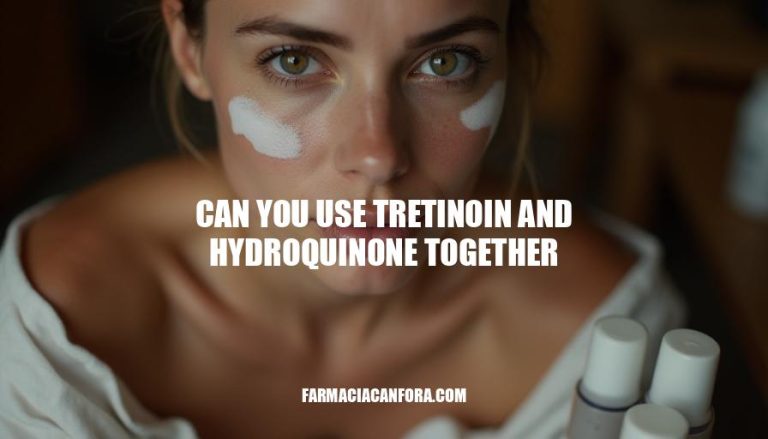


Tretinoin and hydroquinone are strong medicines used for skin problems like dark spots and acne. Tretinoin helps your skin renew itself and feel smoother. Hydroquinone lightens the skin by stopping it from producing too much pigment.
Using them together can make them work better, but you need to use them carefully and see a doctor regularly to avoid any issues.
Combining tretinoin and hydroquinone offers significant benefits for improving skin tone and texture, particularly in addressing hyperpigmentation, melasma, and post-inflammatory discoloration. Tretinoin, a derivative of Vitamin A, accelerates skin cell turnover, exfoliates the skin, and enhances the penetration of other topical treatments, including hydroquinone. Hydroquinone, often referred to as the gold standard for hyperpigmentation treatment, inhibits melanin production by targeting the enzyme tyrosinase.
Together, these agents work synergistically to lighten dark spots, even out skin tone, and improve overall skin texture.
Clinical studies have demonstrated the efficacy of this combination. For instance, a 24-week study comparing various regimens found that a system incorporating tretinoin, hydroquinone, and sunscreen significantly outperformed other treatments in reducing facial photodamage, including hyperpigmentation and wrinkles. Dermatologists often recommend this combination for its ability to address complex pigmentation issues effectively.
Precautions are essential to ensure safe and effective use.
Both tretinoin and hydroquinone can cause skin irritation, dryness, and sensitivity. To minimize these effects, it is recommended to start with lower concentrations and gradually increase usage frequency based on skin tolerance. Typically, applying hydroquinone first allows it to penetrate the skin effectively, followed by tretinoin to enhance its absorption.
Usage is often limited to every other night initially, with adjustments based on individual response.
Sunscreen is crucial when using these agents, as tretinoin increases photosensitivity and hydroquinone heightens UV vulnerability. A broad-spectrum sunscreen with SPF 30 or higher should be applied daily to prevent further pigmentation and protect the skin. Consulting a dermatologist for personalized guidance is strongly advised to optimize results and reduce the risk of adverse effects.
1cityskinclinic.com2okdermo.com3miiskin.com4pro.obagi.com5cosmoderma.org
Using tretinoin and hydroquinone together can be beneficial for improving skin tone and texture, particularly in addressing hyperpigmentation, melasma, and post-inflammatory discoloration. These agents work synergistically to lighten dark spots, even out skin tone, and improve overall skin texture.
However, it’s essential to consult a dermatologist before starting treatment with tretinoin and hydroquinone together, as they can cause skin irritation, dryness, and sensitivity. A professional consultation will help determine the best course of treatment and minimize the risk of adverse effects.
To safely integrate tretinoin and hydroquinone into your skincare routine, start by applying a lower concentration and gradually increase usage frequency based on skin tolerance. Typically, apply hydroquinone first to allow it to penetrate the skin effectively, followed by tretinoin to enhance its absorption. Usage is often limited to every other night initially, with adjustments based on individual response.
Additionally, use a broad-spectrum sunscreen with SPF 30 or higher daily to prevent further pigmentation and protect the skin from increased photosensitivity caused by tretinoin. Regular follow-ups with your dermatologist will help optimize results and reduce the risk of adverse effects.